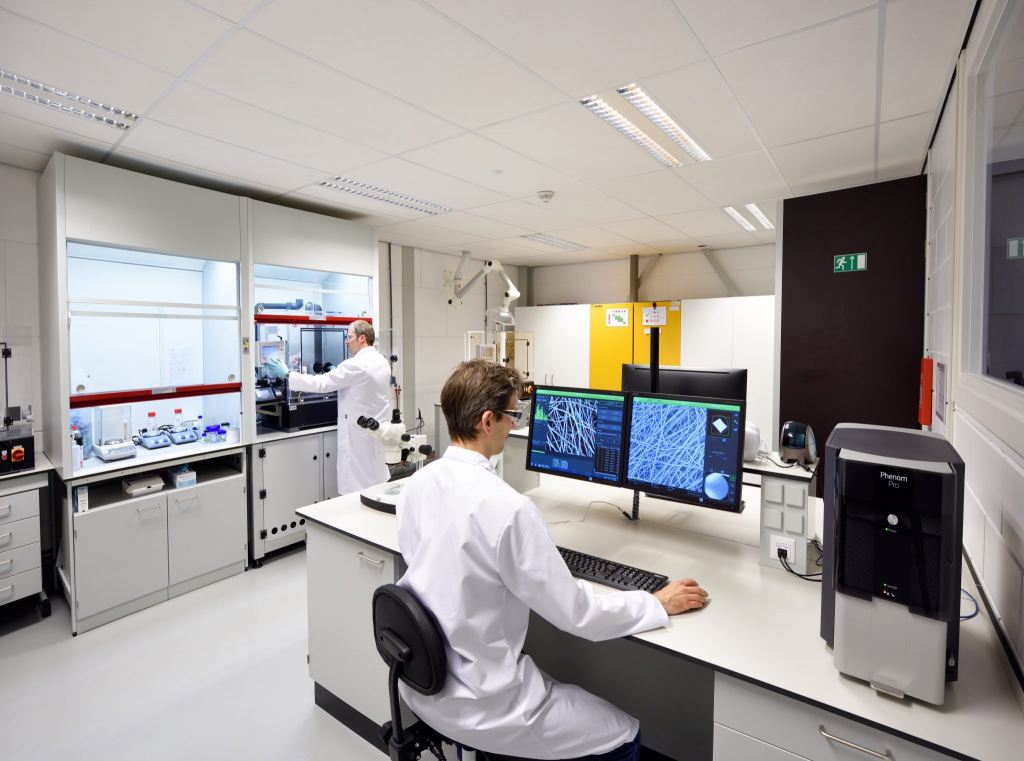
The Brainport Region brings all kinds of products to the world market. Research and development are paying off.
Harrie Verrijt, Eindhovens Dagblad
This article belongs to a 5-part series that was originally published in Dutch on 27 January by Eindhovens Dagblad. E52 took care of translations. Publication is done with the permission of Eindhovens Dagblad. To read the whole series as ED-newspaper pages (pdf), click here. To read all five articles separately on E52, click here.
In the Brainport region, converting knowledge into money is becoming ever more successful. Of course, ASML’s chip machines, Philips MRI scanners, and FEI’s electron microscopes are sparkling stars in the sky above Brainport. But there are many more large and small stars in that sky, even though they are not all that well known.
At the end of the 1990s, the country was convinced that there was no future for the manufacturing industry in the Netherlands, but the Brainport Region proved the opposite. On the foundations of Philips and DAF, it blossoms here like never before. According to the CBS, the region is the absolute leader in this area in the Netherlands, earning more than 9 billion euros in 2016.
Research and development play an important role in this. This can, for example, be seen from the number of patents applied for in the Brainport Region. In 2016 there were 3,200, no less than 46 percent of the patents in the whole of the Netherlands. It all comes down to the High Tech Campus Eindhoven, with gems like the Holst Centre and Solliance and of course the presence of Philips. That group alone accounted for 2570 patents, followed by NXP with 410 patents. ASML applied for 180 patents.
But there is much more. Have you ever heard of the pathology scanner? It is a device that turns hospitals’ laboratories around the world upside down. Laboratories no longer have to look through microscopes because this device makes a very high-resolution scan of the blood or tissue sample. This scan can be displayed directly on the screen of the treating specialist, and that of a colleague, also far away, for a second opinion. A Philips product, but development and production have been done by Sioux/CCM, Prodrive, and Frencken – in the Brainport Region.
There are many more examples of this kind of high-tech gems that have been developed and made here and are marketed all over the world. Think of the Phenom table electron microscope, the mounting machines for printed circuit boards from Kulicke & Soffa (Assembléon) and the solar cell machines from Solaytec.
So apart from those of the superpowers, there are countless high-tech products, usually machines, from laboratories of companies in the Brainport Region. This is so successful because this region is a champion of R&D spending. Here a fifth (in 2015: 1.7 billion euros) of companies’ national spending on R&D is spent. This expenditure still increases every year. In 2017, ASML spent €1.2 billion on R&D, a large part of which was spent in this region. Of a slightly different order is Thermo Fisher/FEI, which will spend approximately 55 million euros on R&D for its electron microscopes during this year. Thermo Fisher says that two-thirds of its products should never be older than two years. This gives a tremendous boost to the company’s R&D activities.
By giving so much attention and money to R&D, ASML and Thermo Fisher are pushing supply companies to do the same. Thermo Fisher uses the rule that the company takes care of 72 percent of R&D and expects its suppliers to pay for the remaining 28 percent. This means that companies such as VDL, Prodrive, Sioux, MI Partners, NTS Group, Neways, and KMWE together also have to spend 21 million euros on R&D for Thermo Fisher’s products. On the other hand, the company generates more than 150 million euros in turnover for these companies. ASML offers similar calculations, with much higher outcomes.
This clarifies how important the role of these supplying companies is. With their engineers, they have to do a great deal of thinking for their customers. At the same time, this results in references to them that open doors at other high-tech producers around the world. Which means extra growth for those companies.
Another important aspect is the cooperation, the trademark of the Brainport Region. Part of it is due to having the same customers. But at the same time, they see that respecting each other’s specialisms makes them achieve much more. In the end, this creates countless beautiful products that are developed and produced here. New customers and new products, therefore, reducing the dependence on ASML and the other giants of the manufacturing industry.
This article belongs to a 5-part series that was originally published in Dutch on 27 January by Eindhovens Dagblad. E52 took care of translations. Publication is done with the permission of Eindhovens Dagblad. To read the whole series as ED-newspaper pages (pdf), click here. To read all five articles separately on E52, click here.
Foto Bart van Overbeeke

